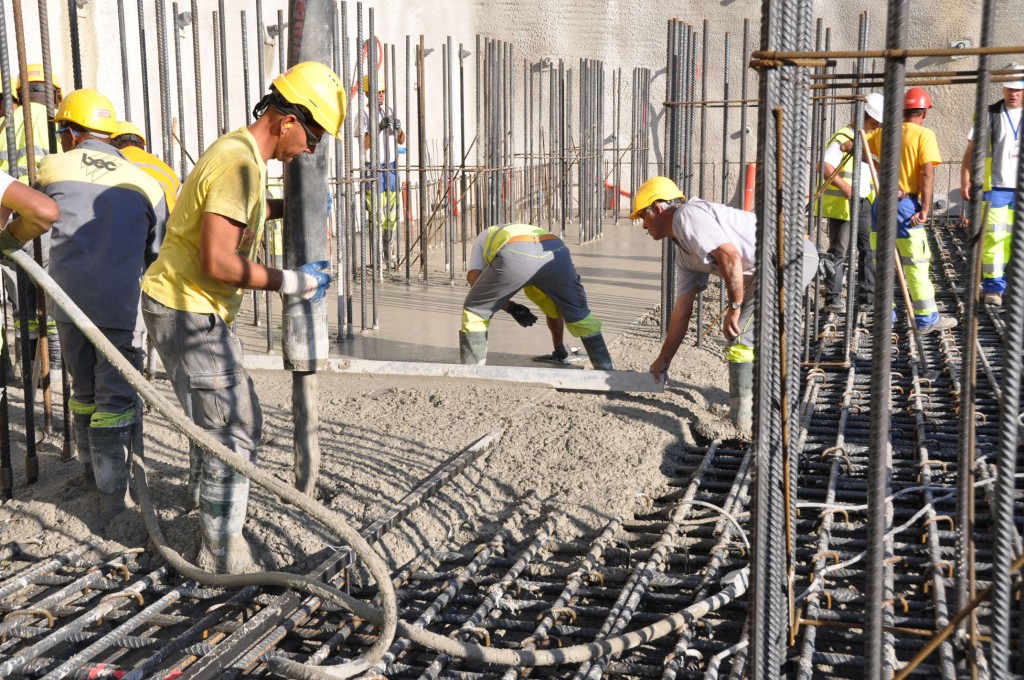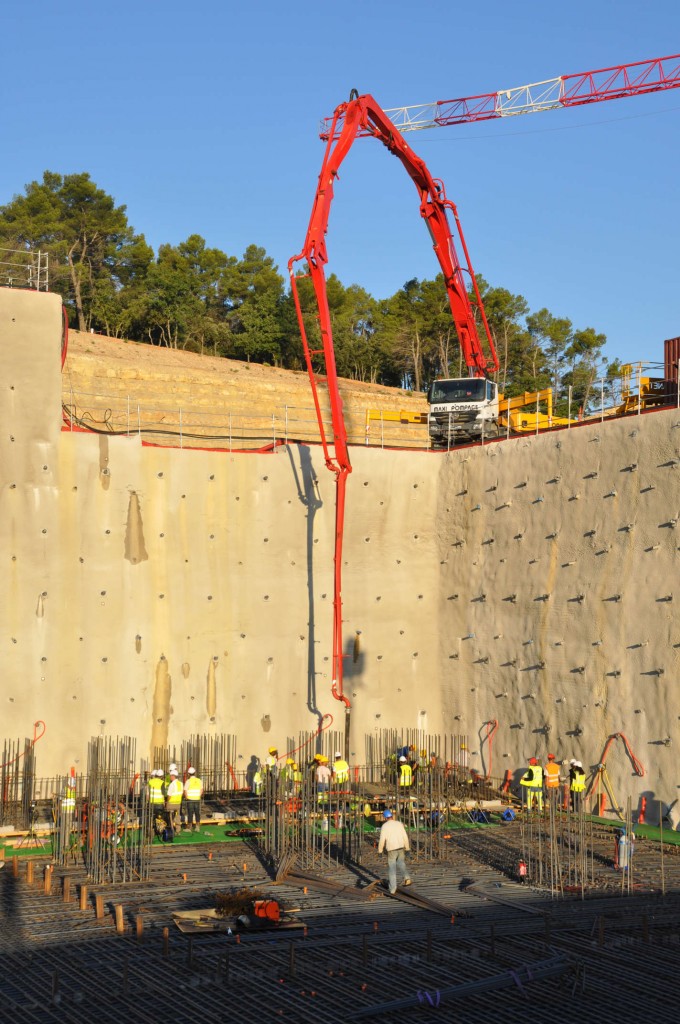ITER NEWSLINE
97
First concrete for Reactor Jules Horowitz
Robert Arnoux
First concrete for Reactor Jules Horowitz

At 4:00 a.m. on 6 August, workers began pouring the reactor's lower bed first concrete.

By the end of September the concrete bed, reinforced by some 1,100 tonnes of steel, will be complete.
At 4:00 a.m. on 6 August, workers began pouring the reactor's lower bed first concrete. Some 200 cubic metres were poured during this first operation that aimed to test the coordination of the various teams involved. Another 900 cubic metres were poured on the 19 August and still another 1,100 last Wednesday night.
Laying the whole installation's lower bed—one metre thick over a surface of 3,500 square metres—will require two more pouring operations that are scheduled on 15-16 and 29-30 September. Pouring operations take place at night or in the early hours of the morning to avoid the intense heat of summer, which is bad for concrete and uncomfortable for men.
By the end of September the concrete bed, reinforced by some 1,100 tonnes of steel, should be complete. Seismic pads will then be installed and in April next year, a slightly thicker upper bed, will be built in one continuous pouring that will take 40 hours. The upper bed will be the platform on which the nuclear facility will be erected. It will act as a third barrier protecting the environment from the nuclear material inside the reactor.
return to Newsline #97



